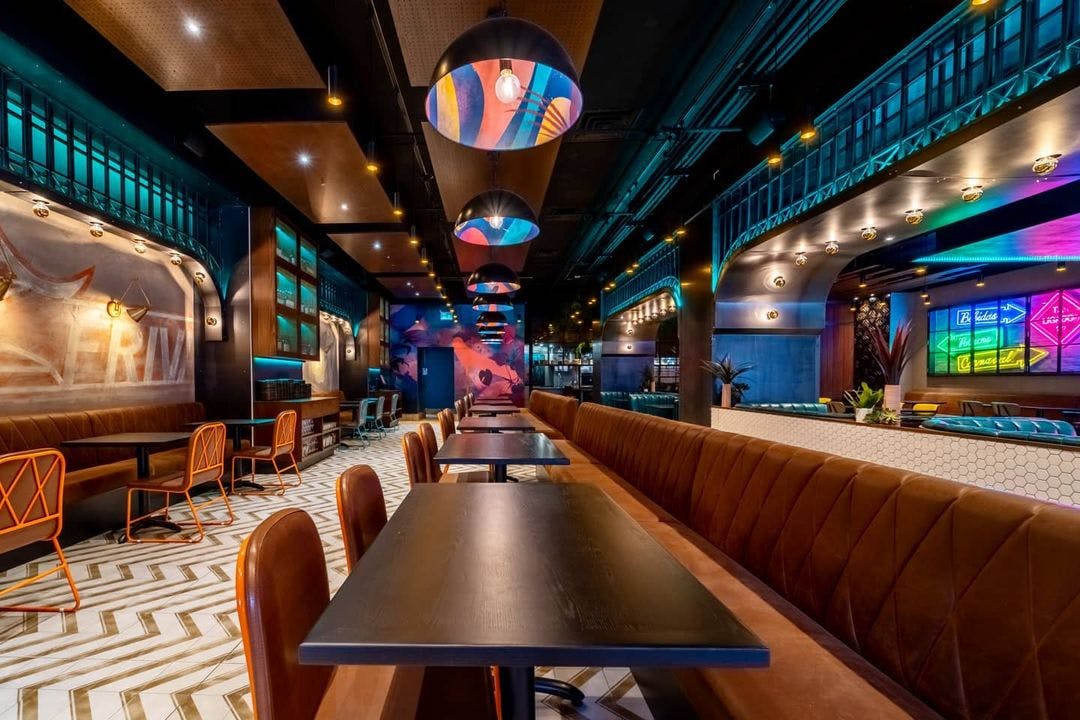
On Oct. 22, the Ontario government released its long-term COVID-19 reopening plan that included lifting capacity limits for restaurants and bars that require proof of vaccination on Oct. 25, among other types of businesses like gyms, casinos and indoor event spaces. The reopening plan will continue into January when the Ontario government plans to lift vaccine certificate requirements in restaurants and other settings they deem as lower risk.
Indoor dining, bars and other food and drinking establishments where there is no dancing have now been open without any physical distancing or capacity restrictions to those who are double vaccinated, which has come as a relief to some restaurant owners.
"The number one thing that this changes for the industry is a vote of confidence, with the government saying restaurants are at risk for spreading COVID-19 and having us in a negative light for so long,” says Adam Slight, the general manager and director of marketing for Paupers Pub on Bloor Street West.
While Paupers Pub is a bigger establishment with two floors and two patios, which Slight says has been a bit of an advantage during the restrictions because they could expand the physically-distanced seating upward and outward, the restrictions still posed some challenges.
“We were traveling too far across multiple floors just to make the same amount of business or less,” he says. “We worked harder for less. Now we’re not running around quite as much.”
Paupers Pub also had seating at their bar closed during the capacity restrictions, which Slight says changed the atmosphere in their restaurant. Now that it’s open, he says it’s great to chat with people who come in just to have a drink or watch a game at the bar.
“It is pretty exciting and foreign to walk into a room and hear that buzz, that chatter, the sound of drinks clanging together, the hockey game on, and the music and the excitement,” he says. “It's a new sound and a new atmosphere because it's been years since we've really experienced that. That has been pretty massive.”

On Oct. 25, mayors and chairs from 11 municipal governments across the Greater Toronto and Hamilton Area released a statement supporting the province’s move to lift capacity limits in restaurants.
“Despite the re-opening which is a positive development, many businesses have a COVID hangover from the earlier stages of the pandemic and need our support by shopping, eating and drinking local,” the statement says.
Slight sees the lifting of capacity limits as a huge help for smaller restaurants that already had a small capacity prior to the restrictions, as they can now fill their restaurants to a level where they can make some profit.
“Some probably couldn’t even operate under the capacity restrictions, so this just opens the door for them,” he says.
Adam Minster, the owner of SARA Restaurant on Portland Street, says they can now fill their whole restaurant instead of half due to the lifting of capacity limits. While Minster is glad the restrictions were lifted now, he says he thinks it should’ve been done earlier.
“We've been following the rules for a very long time,” he says. “At some point in time––when you do everything that's expected of you––you would hope that the government would do what's expected of them, and that's opening up small businesses."
Now that the weather has gotten cooler and patio season has come to an end, some restaurant owners are glad that they can now safely fill their restaurants without physical distancing requirements in order to accommodate the loss of patios that made up for the lack of indoor dining space.
Gary Smith, one of the owners of La Latina on Eglinton Avenue East, says that now with patio season ending and the capacity restriction lifting, they’ve closed their patio and added more tables onto the floor inside of their restaurant. “It’s been very good for our numbers,” he says. “We’ve definitely taken advantage of the capacity limit lifting.”

Slight says he’s glad that patio season is over and that people are feeling more comfortable dining indoors again without restrictions. “Everyone was compromising, so I'm glad that this year the majority of our customers are just saying, 'yeah, I'm vaccinated, I did the right thing, and as a benefit I'm going to sit inside and eat and drink like normal,'” he says.
"I think the people that are vaccinated are definitely feeling the benefits of it and they're ready to enjoy themselves again,” Slight says.
Beginning on January 17, 2022, and barring “concerning trends” of COVID-19 transmission, restaurants––along with other services like sporting facilities and casinos––will be able to host guests without checking their vaccination status.
Smith says he supports the government ending vaccine certificates for indoor dining, as he says it’s been extra work on hostesses and those who work the front door.
While Slight says he wishes to continue checking vaccine certificates at Paupers Pub even after the restriction is lifted, he says it wouldn’t be realistic without any support from the government, as well as if their competitors down the street might not be so eager to continue checking vaccine certificates.
"It's not really a luxury that I think many restaurants are going to have to continue to follow that,” he says. “They're going to be tight in January. There's already the minimum wage going up. There's a lot of moving parts, as far as how restaurants are going to survive.”
Last Wednesday, the Ontario government put its plans to lift the capacity restrictions in some high-risk settings where proof of vaccination is required on hold due to a recent rise in COVID-19 cases. This includes food or drink establishments with dance facilities, such as nightclubs, wedding receptions, strip clubs, bathhouses and sex clubs. These restrictions were planned to be lifted on Nov. 15 and are now delayed for at least 28 days.










